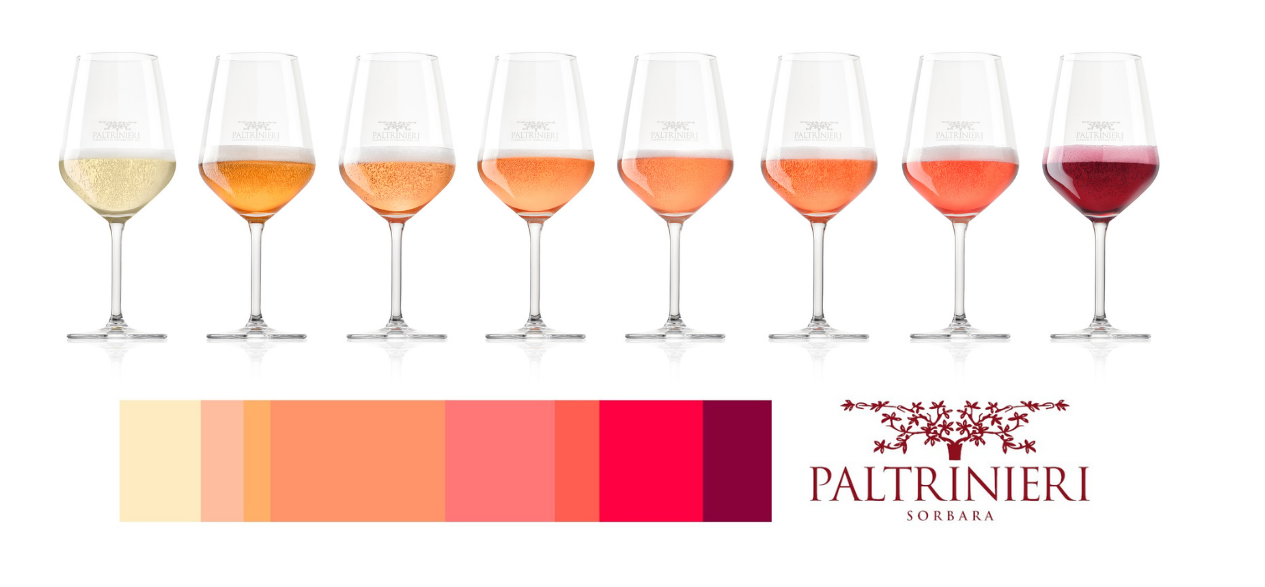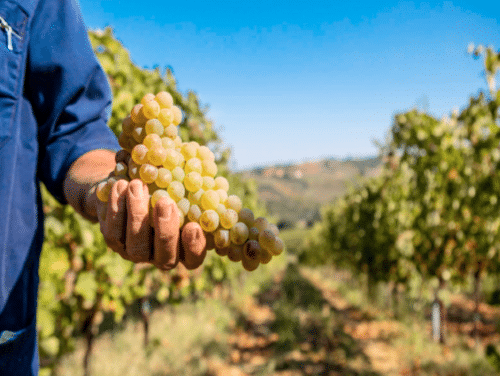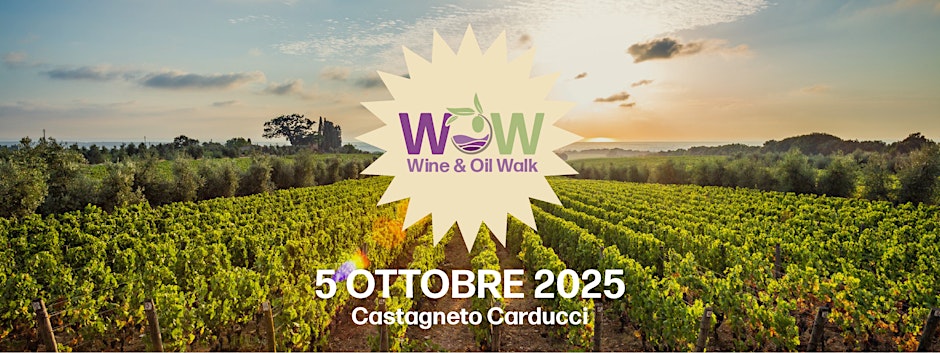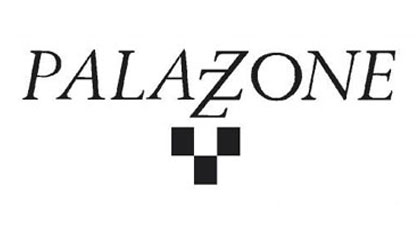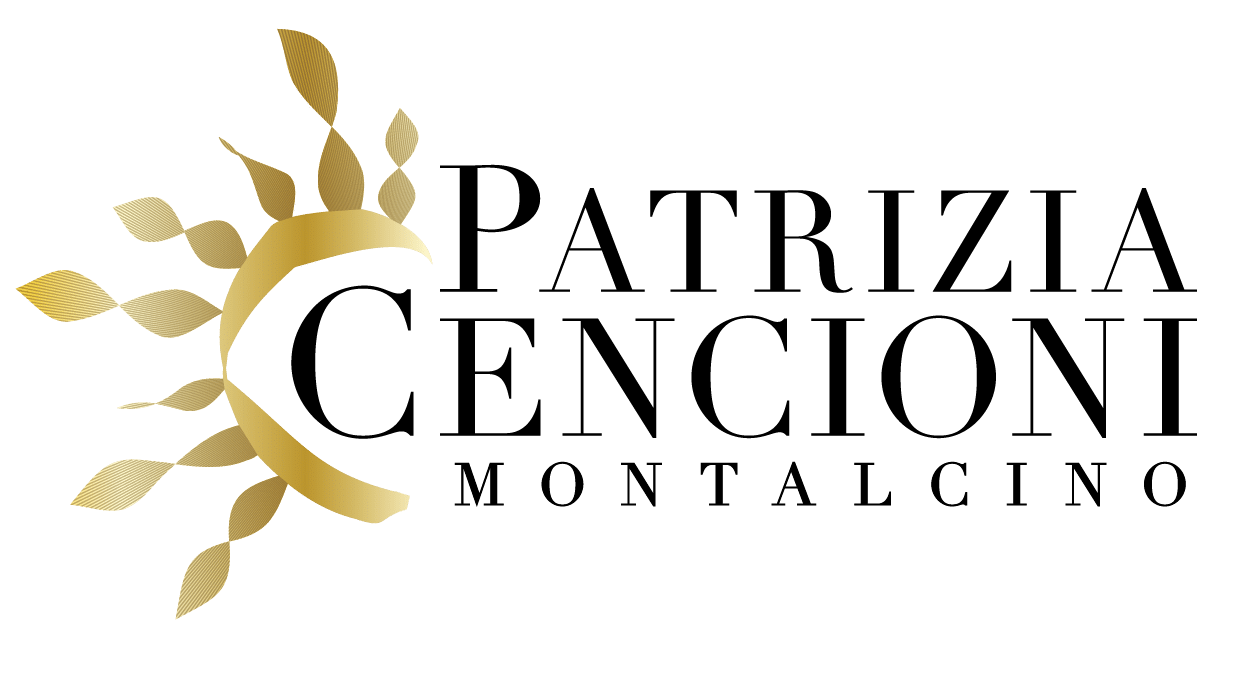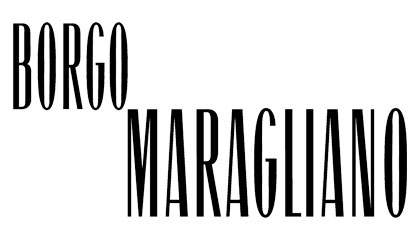Cantina Paltrinieri: vintage update
Continue readingFood / Wine Pairing Guide
ℂ𝕙𝕣𝕚𝕤𝕥𝕞𝕒𝕤 𝕚𝕤 𝕠𝕟𝕖 𝕞𝕠𝕟𝕥𝕙 𝕒𝕨𝕒𝕪.
Discover the best food /wine pairing with our Festive Wine Pairing Guide.
“𝑇ℎ𝑒 𝑠𝑒𝑐𝑟𝑒𝑡 𝑡𝑜 𝑎𝑛 𝑢𝑛𝑓𝑜𝑟𝑔𝑒𝑡𝑡𝑎𝑏𝑙𝑒 𝑚𝑒𝑎𝑙 𝑙𝑖𝑒𝑠 𝑛𝑜𝑡 𝑗𝑢𝑠𝑡 𝑖𝑛 𝑡ℎ𝑒 𝑐𝑜𝑜𝑘𝑖𝑛𝑔, 𝑏𝑢𝑡 𝑖𝑛 𝑡ℎ𝑒 ℎ𝑎𝑟𝑚𝑜𝑛𝑦 𝑏𝑒𝑡𝑤𝑒𝑒𝑛 𝑝𝑙𝑎𝑡𝑒 𝑎𝑛𝑑 𝑔𝑙𝑎𝑠𝑠.”
Whatever you go for meat, fish, pasta, or vegetables, we have the ideal option hand-selected,
—from appetizer to dessert.
Click below to explore the wine that will transform your next meal into a dining experience.
Cheers!

Falstaff Points for CasalFarneto
Falstaff Points for CasalFarneto
Casal Farneto, has received outstanding recognition from Falstaff, one of Europe’s most prestigious wine guides. Five of their signature wines were awarded high scores, a testament to the dedication, passion, and unique terroir of the Marche region.
CasalFarneto:
Nestled in the rolling hills of Serra de Conti, in the heart of Italy’s Marche region, Casal Farneto is more than just a winery; it’s a philosophy. Their motto, ‘il gusto del tempo’ (the taste of time), guides everything they do.
Founded in 1995, the estate spans 35 hectares of vineyards, situated in the classic Verdicchio dei Castelli di Jesi area. They embrace a philosophy that beautifully merges tradition with modern innovation, operating as a ‘technological farm’ that deeply respects the rhythms of nature. Sustainability is at their core, with a strong focus on organic practices to ensure every bottle is a true expression of their land.
While their soul is rooted in the region’s noble white grape, Verdicchio, CasalFarneto also cultivates exceptional red varieties like Montepulciano, Sangiovese, and Cabernet Sauvignon, crafting wines of structure, elegance, and longevity.
The guide uses a 100-point scoring system, which is the international standard for rating wine.
95-100 Points: An absolute classic or ‘wine of the century.’
93-94 Points: Outstanding. (Awarded to Otto Borghi)
91-92 Points: Excellent, among the best of its vintage. (Awarded to Crisio & Gran Casale)
88-90 Points: Very good, a highly recommended wine. (Awarded to Diego & Fontevecchia)
The five Casal Farneto wines that captured the attention of the Falstaff critics are:
93 Points
Otto Borghi – Marche IGT Rosso
A masterful blend of Montepulciano, Cabernet Sauvignon, Merlot, and Petit Verdot.
Tasting Notes: This is a wine of remarkable structure and elegance. It greets the nose with intense aromas of ripe black cherries, blackberries, and plums, layered with notes of spice, leather, vanilla, and chocolate from its 18-month aging in French barriques. The palate is warm, full-bodied, and rich, with soft, velvety tannins and a long, fruity finish.
92 Points
Crisio – Verdicchio dei Castelli di Jesi Riserva DOCG
-100% Verdicchio Riserva.
Tasting Notes: This is a full-bodied, complex, and incredibly elegant white wine. It offers a beautiful bouquet of citrus, white flowers, and ripe peach, underpinned by notes of aromatic herbs and a distinct minerality. The finish is persistent and characterized by the classic Verdicchio almond note, promising excellent aging potential.
91 Points
Gran Casale – Rosso Conero Riserva DOCG
-tribute to the other great grape of the Marche: Montepulciano
Tasting Notes: A deep ruby-red color, this wine opens with an intense, vinous nose of sour cherry, plum jam, and delicate spicy notes. After aging in oak, the palate is structured, warm, and harmonious, showing a soft texture and a persistent, flavorful finish that perfectly balances fruit and spice.
90 Points
Diego – Verdicchio dei Castelli di Jesi DOC Classico (Vino Biologico)
100% Verdicchio Classico, crafted from organically grown grapes.
Tasting Notes: Bright, fresh, and inviting. The nose is bursting with notes of yellow plum, fresh pear, and citrus, with a lovely hint of meadow flowers. The palate is juicy and vibrant, with a racy acidity that makes it incredibly refreshing and easy to drink. A clean, dry, and thoroughly enjoyable organic wine.
90 Points
Fontevecchia – Verdicchio dei Castelli di Jesi DOC Classico Superiore
This Verdicchio Superiore is named for the ‘old spring’ that borders the estate.
Tasting Notes: A classic in every sense. It offers elegant aromas of white flowers, green apple, and citrus peel, backed by a signature high-minerality ‘wet stone’ character. The palate is perfectly balanced between fresh acidity and a rich texture, leading to a long, persistent finish with the hallmark almond flavor.
Discover ‘the taste of time’ and explore these award-winning wines.
For more information:
www.casalfarneto.it
Happy World Animal Day
Happy World Animal Day…with the friends of Torre Raone.
All the labels are inspired on the animals that inhabit the vineyards, creating a strong connection to the land and the natural environment.
The Squirrel – Trebbiano d’Abruzzo – The industrious and nimble spirit of the squirrel is captured in this lively wine. Quick on its feet with a bright, nutty character, it’s a perfect everyday sipper. Notes of apple, pear, and yellow peach make it an ideal partner for light meals and conversation. It’s a testament to the vibrant, busy life that thrives in the vineyard.
The Deer – Trebbiano d’Abruzzo senza solfiti- A wine of nobility and grace. Just as the deer moves with quiet elegance through the forest, this wine is refined and beautifully balanced. It offers notes of green apple, apricot, pineapple and almond aftertaste. This wine is more about finesse than power, a testament to the quiet, dignified beauty of the reserve.
The Shepherd – Pecorino – A wine that speaks of tradition and careful guidance. Just as the shepherd watches over the flock, this Pecorino is a classic and reliable expression of the land. It offers a gentle, refreshing character with clean notes of green apple and white flowers, a timeless taste of the region.
The Fox – Cerasuolo – The cunning and clever fox is the perfect symbol for this crisp, aromatic rose’. This wine is nimble and bright, with a vibrant acidity with notes of cherry, strawberry, yellow plum and mango.
The Hare – Montepulciano d’Abruzzo – lively and quick-footed rosé, is perfectly captured by the hare. It’s a burst of energy in a bottle—full of bright red fruit flavors like strawberry and raspberry. Zippy and refreshing, it’s a wine that invites you to enjoy life’s quick, fleeting moments.
The Boar – Montepulciano d’Abruzzo senza solfiti – A bold, rustic red that embodies the untamed spirit of the wild boar. Much like the boar forages for truffles, this wine unearths deep, earthy notes of dark cherry, leather, and spice. It’s powerful and concentrated, a true expression of Abruzzo’s character.
The Wolf – Montepulciano d’Abruzzo Riserva – The alpha of the vineyard. This wine is a riserva, aged to perfection, showing a more complex and structured profile. It’s a true pack leader—powerful and elegant, with layers of dark fruit, cocoa, and a hint of forest floor. A wine that commands attention.
The Ox – Montepulciano d’Abruzzo Riserva Terre dei Vestini – A symbol of strength and patience. This wine is a testament to the hard work of the land. It is a robust and full-bodied creation, with an immense depth of flavor and a lasting finish. It’s a wine to savor slowly, a testament to endurance and powerful character.

WOW: Percorso Castagneto Carducci
WOW: Percorso Castagneto Carducci
Continue readingZenato received nice reviews by Robert Parker
Zenato received nice reviews by Robert Parker.
The project “Archivio Storico Zenato” was created to celebrate a history of caring, dedication and passion, which led to recognize worldwide the name of Zenato as a synonym of excellence and identity of a unique area: Valpolicella.
The first vintage, 2008, has rested for a decade in large oak barrels. The milestone of this project that underlines the link to a territory in which we have believed and invested since the beginning.
A story of care, dedication and passion, the decision to revive every 10 years a barrel so special that it deserves the wait.
Produced only in top vintages, this graceful wine is made from a selection of Corvina and Rondinella grapes grown in the oldest vineyards in the township of Sant’Ambrogio in Valpolicella’s “classic” zone.
Following vinification, it undergoes long-term aging for at least 4 years in Slavonian oak casks.
It represents the very identity of the winery and its legacy throughout the world – a wine that can age and be enjoyed for more than 20 years.
With luminous and dense color, elegant complexity, and a wonderful touch of spice, it’s a wholehearted expression of the land where it is made.
When the dried grapes for the Amarone have completed their fermentation, a top selection of Valpolicella grapes “passes over” (ripassa) the Amarone pomace, thus resulting in a second brief fermentation.
This helps to obtain a higher alcohol content, deeper color, and rich flavor and aroma.
After aging in French tonneaux for 18-20 months, the wine is cellared for another 6 months in bottle before release.
The process makes for a refined and concentrated wine, extremely smooth and velvety, with vibrant red fruit aromas.
On the palate fruity notes and elegant tannin with hints of chocolate and spice.
This Lugana Riserva is the fruit of the Zenato family’s genuine passion and a reflection of their history in the appellation.
The grapes for this wine come from the oldest vines on their Podere Massoni farm. They are harvested slightly late, around mid-October.
Fermentation takes place in oak cask (70%) and stainless steel (30%).
Light brilliant gold in color, this wine delivers intense multi-faceted aromas on the nose, with floral and citrus notes, spices, white plum, and vanilla.
On the palate, it’s rich in flavor, with great depth and balance. An ideal white for aging.
Catch all the latest…..
…..follow Zenato
Palazzone: 95 Pts by Doctor Wine
Palazzone: 95 Pts by Doctor Wine for the beautiful Orvieto Classico Superiore Campo del Guardiano 2022.
Continue readingNew label Solarianne
New label Solarianne: Patrizia Cencioni‘s Rosso Toscana has a new label.

Rosso Toscana IGT Solarianne 2022
“Solarianne: a singular wine for the mouth as well as on the label.
A project that changes every year – not only in the choice of the final blend but also in its aesthetics: year by year, We choose a different bottle label together with the Sienese painter Alessandro Grazi“
– Patrizia Cencioni-
THE WINE
Grapes: 50% Sangiovese – 50% Cabernet Sauvignon
Vinification: in steel
Staying on small lees: 36 months in 2.5 oak barrels (French oak)
TASTING NOTES:
Colour: clear, deep ruby red with violet reflections.
Bouquet: floral and fruity, particularly in evidence the scent of black cherry and fresh violet.
Taste: it is a structured wine, intense and with good persistence. It is elegant and fine, well balanced between softness and tannicity.
Food pairings: red and white meats, cheeses and cold cuts.

THE WINERY:
The winery is managed by the owner Patrizia and her 2 daughters, Annalisa and Arianna. Thanks to the long family experience and the entrepreneurial skills of Patrizia, a refined feminine touch is added.
There is feminine elegance in the wines from this cantina.


THE LAND:
The vineyards date back to 1989, the year in which the company was born, which draws its origins from an ancient company in Montalcino created in the 1950s by grandfather Giuseppe Cencioni, one of the founders of the Brunello di Montalcino Consortium.
Located a few kilometres from the town center of Montalcino at about 350 meters a.s.l., overlooking the Val d’Orcia.
A total area of 50 Ha, of which 9 Ha of Sangiovese vineyards and 7 Ha of olive groves
THE WINES:
High profile wines and Sangiovese.
The azienda creates high profile wines, thanks to a very good balance between use of modern technologies and respect for the tradition. This results in a range of excellent wines. Wines where Sangiovese is the protagonist.
With the steel vats at controlled temperatures, the correct fermentation is guaranteed.
The slow aging of the wines takes place in oak barrels, with their refinement the elegance and character, already peculiar characteristics of each vintage, stand out also in the bottle.


Check the website of the winery for more info about the producer and the wines
New barrels at Borgo Maragliano
New barrels at Borgo Maragliano: 3 ceramic-stoneware
Continue readingSeptember’s events
September’s events: take a look at the upcoming events organised by our associated producers.
“Una passeggiata tra le nuvole” – “A walk in the clouds”
a gentle Sunday morning, the crisp air and a scenic walk through historic vineyards, surrounded by breathtaking views.
“A walk in the clouds”
Settembre in Cantina Paltrinieri
Tours and tasting during the harvest
Don’t miss this unique lambrusco experience!
Festival Franciacorta in Cantina
During this event over 60 wineries in the Franciacorta region of Lombardy, Italy, open their doors to the public offering a variety of activities, including tours, tastings, food pairings with local dishes and other events like bike tours and visits to historical sites.
Ingravel Morellino

Festival Friuli DOC



